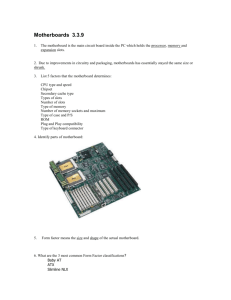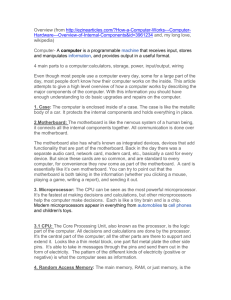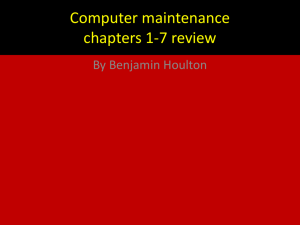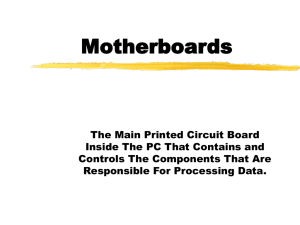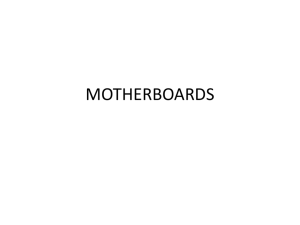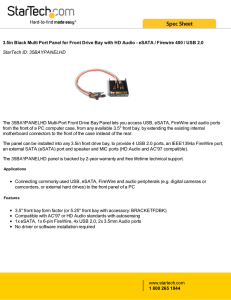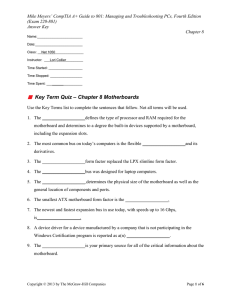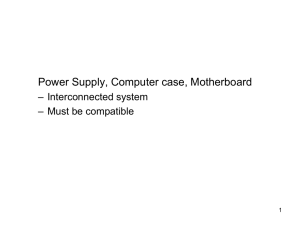PPT - pantherFILE
advertisement
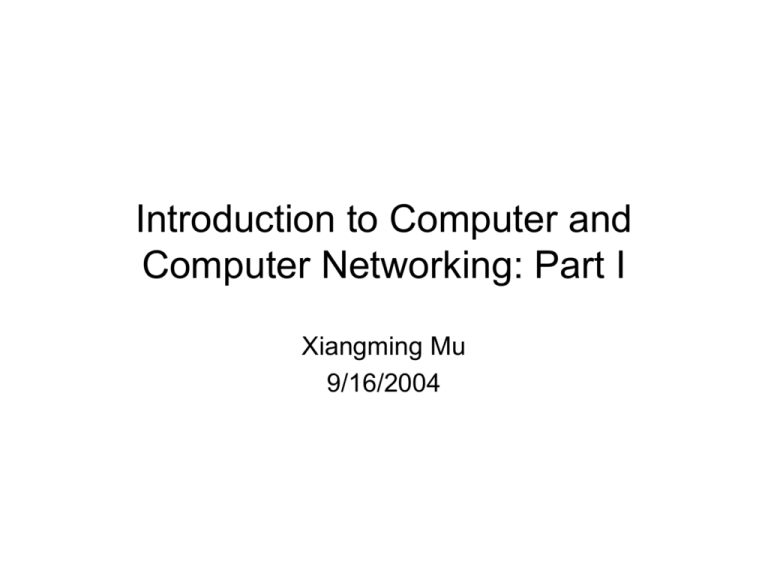
Introduction to Computer and Computer Networking: Part I Xiangming Mu 9/16/2004 What Is a Computer and What Does It Do? A computer is a programmable electronic device that accepts data and performs operations on that data. • Input—entering data into the computer. • Processing—performing operations on the data. • Output—presenting the results. • Storage—saving data, programs, or output for future use. Computers to Fit Every Need • Five basic categories – Mobile devices – Personal computers – Midrange servers – Mainframe computers – Supercomputers Operating Systems • • • • • System software acts as a mediator between application programs and the hardware resources of the computer system. Application software provides the tools to perform particular tasks on a PC, such as writing a letter, processing orders, playing games, composing and e-mail, and so forth. Most programs use a graphical user interface (GUI). The most common operating systems for PCs today is Microsoft Windows. Other GUI operating systems are Mac OS and Linux. And more… Data and Program Representation • • • Computers today are mostly digital computers—devices that can only understand two states. The two states of a digital computer are typically represented by 0s and 1s; that is, in binary form. Computers do all processing and communications in binary form, so natural-language input and output are translated to and from binary by the computer. Coding Systems for Text-Based Data • ASCII and EBCDIC – Fixed-length codes that can represent any single character of data as a string of eight bits. • Unicode – A longer (32 bits per character is common) code that can be used to represent text-based data in virtually any written language. • Graphics data—often stored as a bitmap which the color to be displayed at each pixel stored in binary form. • Audio data—waveform audio is common; MP3 compression makes audio files much smaller. • Video data—requires a great deal of storage space, but can be compressed. Inside the System Unit • The system unit of a PC is the case that houses processing hardware and other hardware. • All of the hardware contained within the system unit is connected to the system board or motherboard. • The CPU (central processing unit) does the vast majority of processing for a computer. • Buses are electronic paths that data travels around on a computer system. • RAM (random access memory) is the computer’s main memory and is used to temporarily storage programs and data with which it is working. • Expansion cards can be inserted into expansion slots on the motherboard. • Some external devices can be plugged into existing USB or FireWire ports without adding another expansion card. Inside the System Unit • The system unit of a PC is the case that houses processing hardware and other hardware. • All of the hardware contained within the system unit is connected to the system board or motherboard. • The CPU (central processing unit) does the vast majority of processing for a computer. • Buses are electronic paths that data travels around on a computer system. • RAM (random access memory) is the computer’s main memory and is used to temporarily storage programs and data with which it is working. • Expansion cards can be inserted into expansion slots on the motherboard. • Some external devices can be plugged into existing USB or FireWire ports without adding another expansion card. Storage • • • Magnetic disk storage systems Optical disc storage systems Other types of storage, such as flash memory, magnetic tape, remote storage, and smart cards Input • Input devices convert data from the user into a form understood by the computer. Output • Output devices convert the processed 0s and 1s into a form that the user can understand. – Hard copy—permanently recorded, such as on paper. – Soft copy—temporarily recorded, such as on a computer screen. Computer Networks and the Internet • • • A computer network links computers together so that users can share hardware, software, and data, as well as electronically communicate with each other. Network servers manage resources on a network. Clients are computers on the network that access resources via the network server. What Is a Browser? A Web browser is a program used to view Web pages. Common browsers: Microsoft Internet Explorer Netscape Navigator MSN Explorer Opera Wireless phones and other small devices use microbrowsers. Internet Addresses • • • • An Internet address identifies a resource available through the Internet, such as a person, computer, or Web page. IP addresses (e.g. 207.46.134.222) and domain names (e.g. microsoft.com) identify computers available through the Internet. URLs (e.g. www.course.com) identify a Web page on the Internet. E-mail addresses (e.g. jsmith@course.com) identify a person on the Internet.



